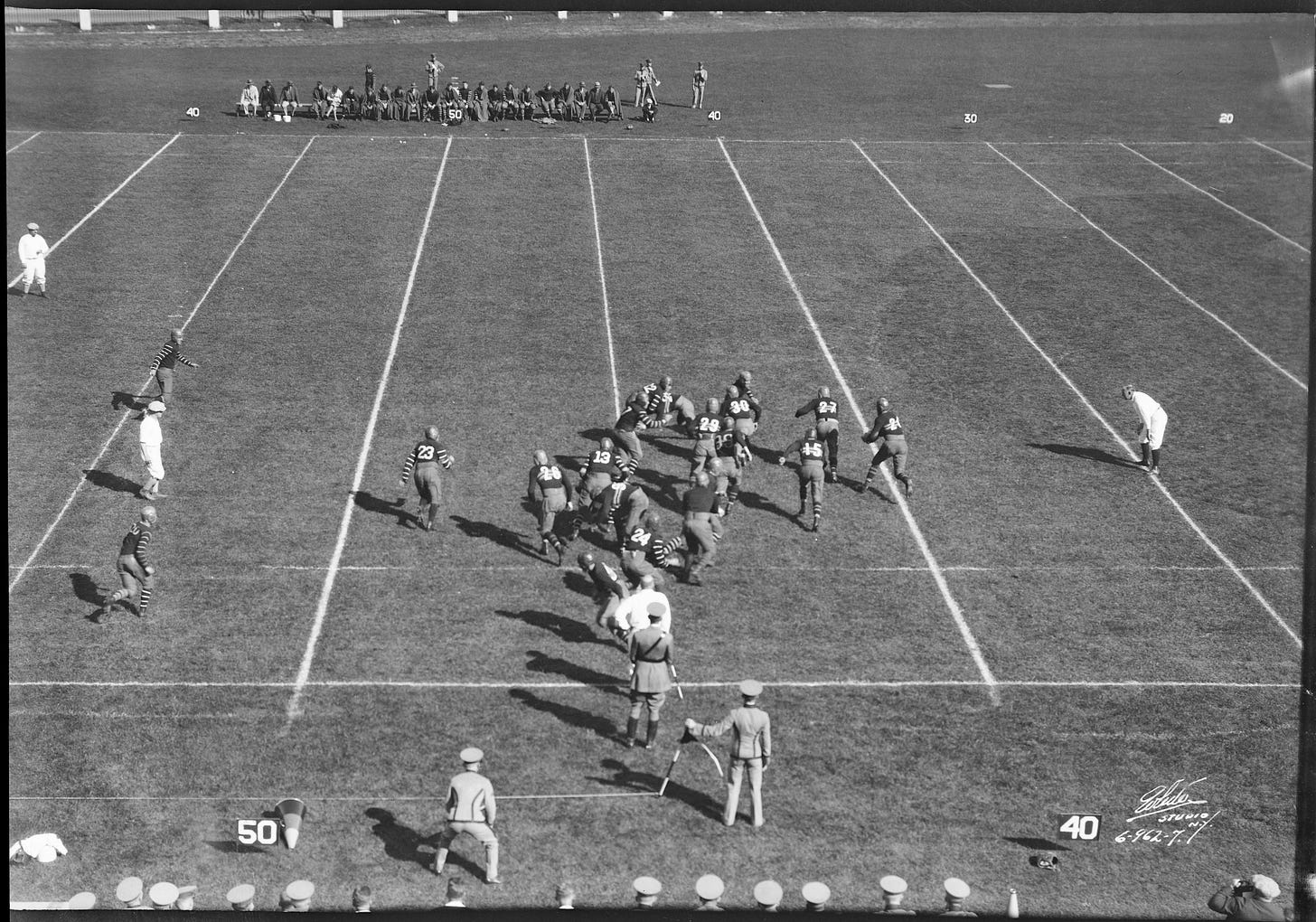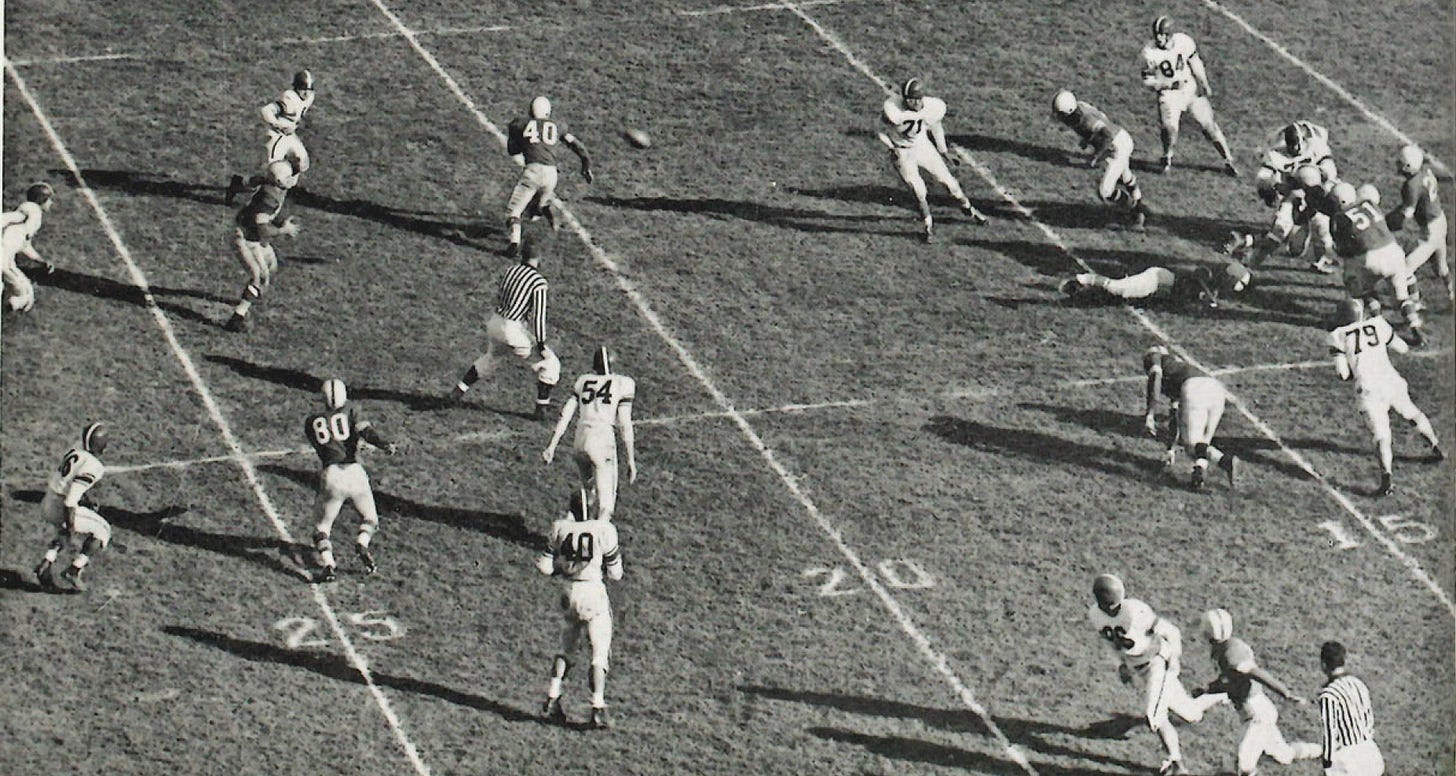Today's Tidbit... Football's Inbound Stripes
Football fields have always had regulation stripes, but some location-specific markings also found their way onto the field. Some, such as Lockney Lines, were added at one locale, proved of value, and were soon adopted across the sport. Others, like end zone decorations, are widespread but unique to each location.
The innovators among football's groundskeeping crews periodically added a dash or two to spice up their fields and assist the players, officials, and fans. One such addition was the inbound stripe that preceded what we now call the hash mark. Whereas hash marks designate where the ball should be spotted when the previous play ended outside the hash mark, inbound lines preceded hash marks and showed the minimum distance the ball could be brought from the sideline when the ball went out of bounds on the previous play.

Before hash marks, football followed the old rugby rule allowing the offense to bring the ball in five to fifteen yards from the sideline after it went out of bounds. It is unknown why West Point opted to add the minimum stripe at five yards inbounds and not the fifteen-yard stripe, but that is what they did.
After adopting hash marks in 1933, some stadiums marked the field with continuous stripes rather than dashes intersecting the yard lines. However, those went away in the 1950s, perhaps driven out by the addition of Lockney Lines in 1956.
Football Archaeology is reader-supported. Click here to buy one of my books or otherwise support the site.


